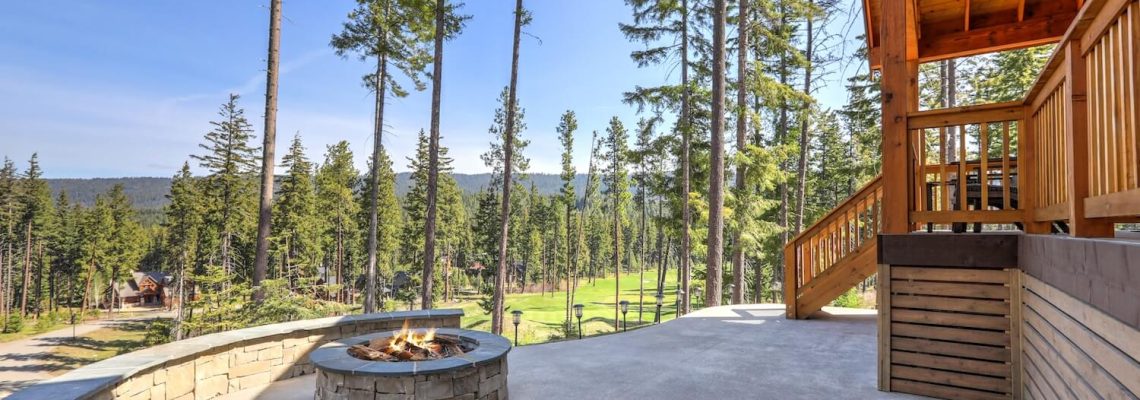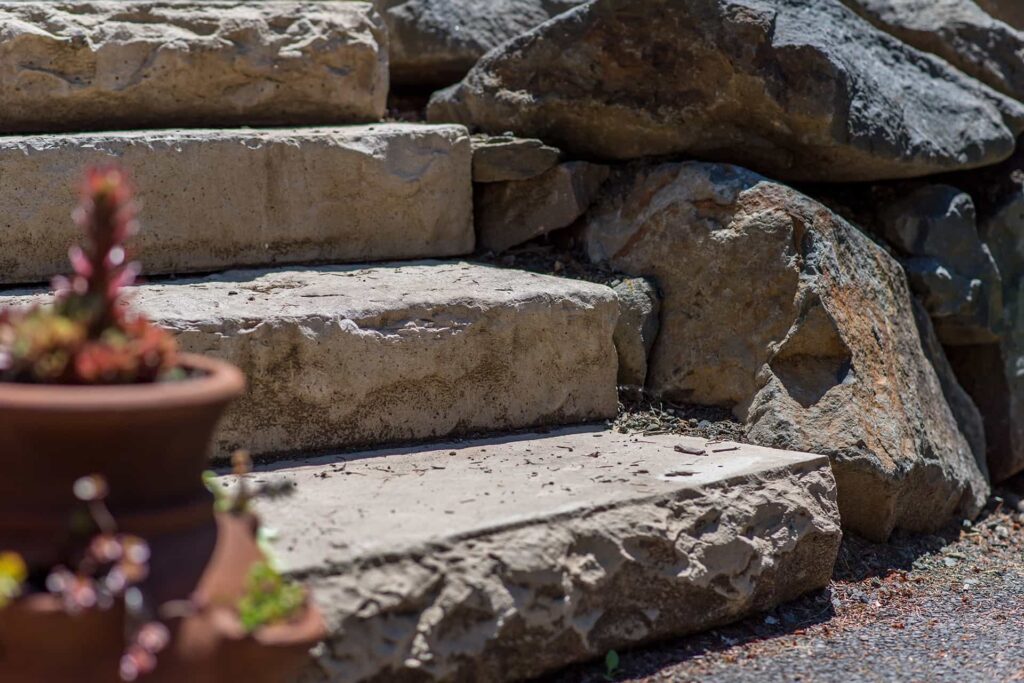A paver fire pit can transform your outdoor living space, making it a focal point for gatherings and relaxation throughout the year. From chilly winter nights to balmy summer evenings, a well-designed and professionally installed paver fire pit can enhance the ambiance of your yard and provide a cozy gathering spot for family and friends. This comprehensive guide delves into the benefits of a paver fire pit, the step-by-step process of professional installation, and essential tips for maintaining it to ensure year-round enjoyment.
Benefits of a Paver Fire Pit
1. Versatility and Design Options
Paver fire pits are renowned for their versatility. The wide variety of materials available—from classic brick and natural stone to modern concrete pavers—means you can create a fire pit that perfectly complements your outdoor design. Whether you prefer a rustic, natural look or a sleek, contemporary appearance, the flexibility of paver materials allows you to achieve the style that best fits your vision. You can choose from a range of shapes, sizes, and colors, ensuring that your fire pit becomes a cohesive part of your landscape design.
Additionally, paver fire pits can be customized with various features such as built-in seating, stone benches, or integrated tables. These additions not only enhance the functionality of your fire pit but also add to its visual appeal, creating a more inviting and comfortable space for gatherings.
2. Paver Durability and Longevity
Pavers are exceptionally durable and well-suited for outdoor applications. Unlike materials that may deteriorate over time due to exposure to the elements, pavers are designed to withstand harsh weather conditions, including heavy rain, snow, and extreme temperatures. Their resistance to cracking and fading ensures that your fire pit maintains its beauty and structural integrity for many years.
Moreover, pavers are less prone to shifting or settling compared to other materials, thanks to their interlocking design. This stability is crucial for maintaining the safety and functionality of your fire pit, ensuring it remains a reliable feature of your outdoor space.
3. Enhanced Outdoor Living for All Seasons
One of the most compelling reasons to install a paver fire pit is the enhancement it brings to your outdoor living experience. A fire pit creates a warm, inviting atmosphere that extends the usability of your outdoor space. It becomes a central gathering point for social activities, such as family dinners, game nights, or casual get-togethers.
The ability to enjoy your outdoor space year-round, even in cooler weather, increases the value of your property and enhances your lifestyle. A paver fire pit allows you to enjoy cozy, fire-lit evenings, making your backyard a more versatile and enjoyable space throughout all seasons.
4. Low Maintenance Pavers
Maintaining a paver fire pit is relatively simple compared to other materials. Pavers are resistant to stains, and their surface is easy to clean. Regular maintenance involves basic tasks such as removing ash and debris, cleaning the paver surface with mild detergent and water, and checking for any signs of wear.
Unlike other materials that may require frequent sealing or treatment, pavers generally need minimal upkeep. This ease of maintenance allows you to spend more time enjoying your fire pit and less time on repairs or cleaning.
Steps in Professional Installation
1. Planning and Design
The planning and design phase is crucial for a successful paver fire pit installation. A professional installer will begin by assessing your outdoor space and discussing your vision for the fire pit. This phase involves:
- Site Assessment: Evaluating the location for factors such as accessibility, safety, and aesthetic integration. The installer will consider proximity to structures, wind direction, and the overall flow of your outdoor space.
- Design Consultation: Working with you to determine the size, shape, and style of the fire pit. This includes choosing materials, colors, and any additional features you may want, such as built-in seating or a surrounding patio area.
- Permits and Regulations: Ensuring that the installation complies with local building codes and regulations. Some areas may require permits for outdoor fire features, so it’s important to address these requirements before proceeding.
2. Site Preparation
Proper site preparation is essential for a stable and long-lasting home fire pit. The preparation process includes:
- Clearing the Area: Removing any existing grass, plants, or debris from the site. This may involve excavation if the area needs to be leveled or if there are obstructions that need to be removed.
- Ground Leveling: Ensuring the ground is level and compacted to provide a stable base for the pavers. This step may involve grading and soil compaction to prevent future shifting or settling.
- Drainage Considerations: Installing proper drainage solutions to prevent water from accumulating around the fire pit. Adequate drainage is crucial to prevent erosion and ensure the longevity of your fire pit.
3. Base Installation
A well-prepared base is critical for the stability and durability of your paver fire pit. The base installation involves:
- Gravel Layer: Laying a layer of gravel to provide drainage and support for the pavers. The gravel helps to distribute weight evenly and prevent shifting.
- Sand Layer: Adding a layer of sand over the gravel to create a level surface for the pavers. The sand also helps to further stabilize the pavers and allows for minor adjustments during installation.
- Compaction: Using a plate compactor to compress the gravel and sand layers, ensuring a stable and even base for the paver installation.
4. Paver Installation
The installation of pavers is a precise process that requires attention to detail:
- Laying the Pavers: Arranging the pavers according to the design plan. This involves carefully placing each paver and ensuring proper alignment and spacing. The installer will use tools such as a rubber mallet and level to ensure accuracy.
- Cutting and Fitting: Cutting pavers as needed to fit around curves or corners. Precision cutting ensures a seamless appearance and proper fit.
- Edging and Coping: Installing edge restraints and coping stones around the fire pit. These elements not only provide a finished look but also help to prevent the pavers from shifting over time.
5. Fire Pit Assembly
If your paver fire pit includes a built-in fire pit kit, this step involves:
- Assembly: Assembling the fire pit kit components, including the fire bowl, burner, and control system. The installer will follow manufacturer instructions to ensure proper setup.
- Integration: Integrating the fire pit kit with the paver structure, ensuring that it fits securely and functions correctly. This may involve connecting gas lines or electrical components, depending on the type of fire pit you have.
6. Finishing Touches
The finishing touches bring your fire pit project to completion:
- Filling Joints: Filling gaps between pavers with sand or grout. This process helps to lock the pavers in place and prevent weeds from growing between them.
- Compacting Surface: Using a plate compactor to press down the pavers and ensure a tight fit. This step helps to stabilize the pavers and prevent movement.
- Cleaning: Removing any excess sand or debris from the surface of the pavers. A clean finish enhances the appearance of the fire pit and ensures that the installation is complete.
7. Fire Pit Safety and Testing
Before you can start using your new fire pit, the installer will conduct a thorough safety check:
- Ventilation: Ensuring proper ventilation for the fire pit to prevent smoke accumulation and ensure safe operation.
- Ignition Test: Testing the ignition system to ensure it functions correctly and safely. This includes checking for any gas leaks or issues with the burner.
- Safety Features: Verifying that all safety features, such as automatic shut-off systems or safety barriers, are in place and functioning properly.
Tips for Maintaining Your Paver Fire Pit
1. Regular Cleaning
Keeping your paver fire pit clean helps to maintain its appearance and functionality:
- Ash Removal: Regularly remove ash and debris from the fire pit to prevent buildup. This prevents damage to the paver surface and ensures proper airflow for the fire.
- Surface Cleaning: Clean the paver surface with a mild detergent and water. Use a soft brush or cloth to avoid scratching the pavers.
2. Inspect for Wear and Tear
Regular inspections help identify and address any issues before they become serious problems:
- Paver Inspection: Check for loose or damaged pavers. Address any issues promptly to prevent further damage.
- Fire Pit Components: Inspect the fire pit’s burner, ignition system, and other components for wear and tear. Replace any damaged parts as needed.
3. Protect from Harsh Weather
Protecting your fire pit from extreme weather conditions can extend its lifespan:
- Covering: Use a fire pit cover to shield the fire pit from rain, snow, and debris when not in use. This helps to prevent moisture damage and keeps the fire pit clean.
- Seasonal Preparation: Before winter, ensure that your fire pit is clean and in good condition. In spring, inspect for any winter damage and perform necessary repairs.
4. Check the Fire Pit Components
Regularly check the fire pit’s components to ensure they are functioning correctly:
- Burner Maintenance: Clean the burner regularly to prevent blockages and ensure even burning.
- Gas Connections: Check gas lines and connections for leaks or damage. Ensure that all connections are secure and functioning properly.
5. Seasonal Maintenance
Perform seasonal maintenance to prepare your fire pit for different weather conditions:
- Winter Preparation: Clean and inspect your fire pit before the winter season. Ensure that it is ready for use and that any necessary repairs are completed.
- Spring Check: In the spring, inspect your fire pit for any winter damage. Clean the fire pit and perform any required maintenance to get it ready for the warmer months.
Conclusion
A paver fire pit is an investment that enhances your outdoor living space, offering warmth and ambiance throughout the year. By choosing professional installation, you ensure that your fire pit is built to last and functions safely and efficiently. Regular maintenance and care will keep your fire pit in excellent condition, allowing you to enjoy its benefits year-round.
From the initial planning and design to the installation and ongoing maintenance, a paver fire pit can be a valuable addition to your outdoor space. Its durability, versatility, and aesthetic appeal make it a popular choice for homeowners looking to extend their outdoor living season. With proper care, your paver fire pit will continue to be a cherished feature of your home, providing comfort and enjoyment for years to come.


